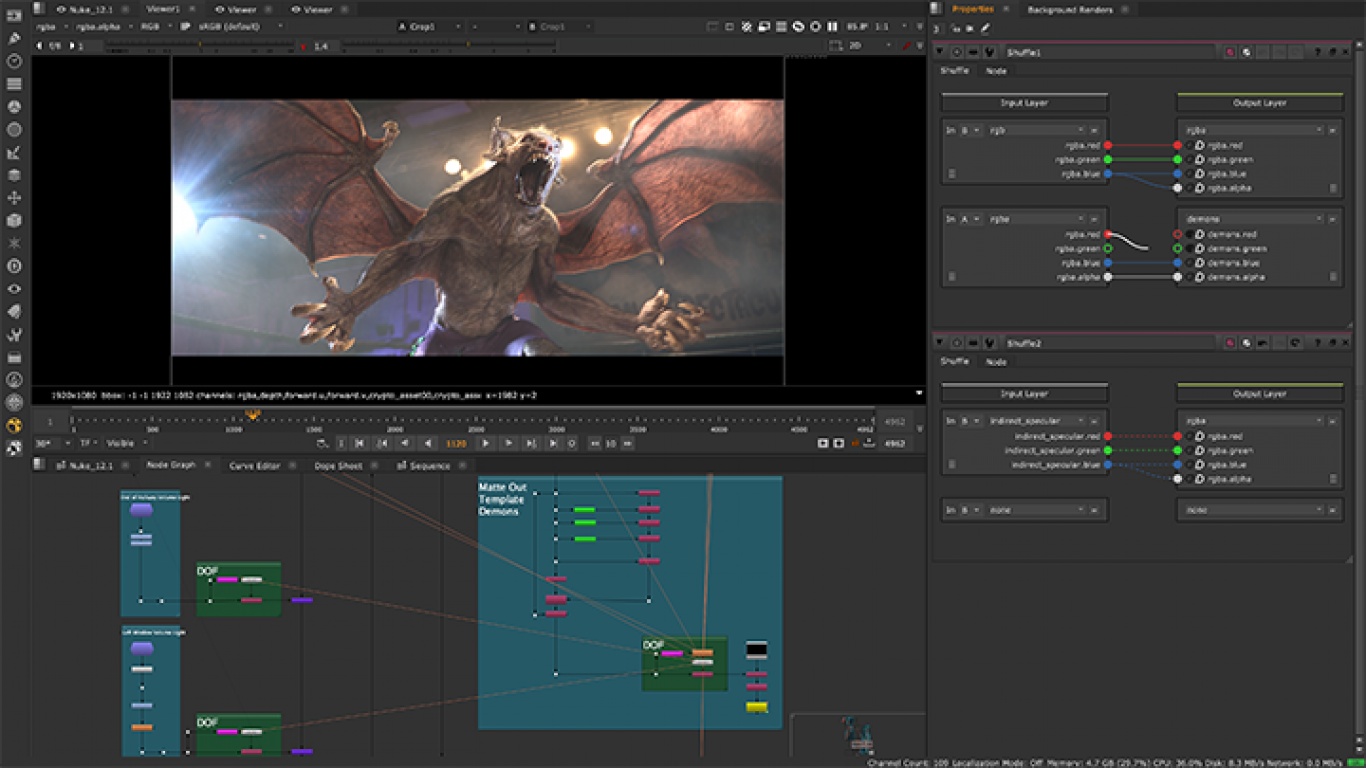
VFX Software Tools
Blender
Blender is a free and open-source 3D software tool set for creating animations, vfx, 3d models and motion graphics.
Seen as an open source competitor to Autodesk’s Maya Blender is free and has gathered rapid adoption as a result.
Blender’s tool set is used for 3d and 2d work and has been used for a number of animations available on Netflix including:
Overview:
100% free tool - used by indies and startups.
UI - Known for having a simple UI across rendering, exporting and keyframe animation tools
Constant Development - Plugins and add-ons continually being added, including animation nodes.
Unity and Unreal - easy to export to game engines in .fbx, .gib and .gltf
Online Community - extensive online community of users to help users.
Maya
The most used and developed software tool for 3D animation. Seen as the industry standard 3D software for modeling and animation.
In the 80s and 90s two companies, Alias and Wavefront were seen as pioneers in the space, building their 3D animator and Composer products. ILM won oscars for best VFX in The Abyss, Terminator 2 and Jurassic Park, all done using PowerAnimator.
Silicon Graphics acquired both Alias and Wavefront as their workstations were used to run the software. This was seen as a response to Microsoft acquiring Softimage. Alias released Maya in 1998 bringing together parts of Wavefront tools to provide artists with new tools including fluid simulator, used to simulate smoke, clouds, fire and explosions.
Dynamics has always been one of the core features of Maya, with industry leading cloth, particles and hair simulation. Maya is not only used for film and tv, but is also used in video games and design.
After SGI’s demise, Autodesk acquired both Alias Wavefront and Softimage. Autodesk is creator of AutoCAD and one of the largest software companies in the world.
Overview:
Industry leading - the standard tool set when it comes to creating animations and visual effects.
Core features - having been developed for over 3 decades the tool kit and add-ons are expansive.
Graph Editor - very popular tool that enables artists to quickly edit animation curves within a scene. Allowing the user to control an animation in a much more precise and visual way.
Maya costs $270 a month and enables users to define a virtual workspace to implement and edit media between teams with access to a host of tools.
Size - the application is 6GB
3DS Max
A powerful modelling tool within Maya.
Used for non-human animation, when animating rigid objects the tool of choice. Ideal for simple animations.
Perfect for 3D modellers to then move into animation.
Games Industry use 3DS for most of their animation work - think Grand Theft Auto.
Rigging system seen as inferior to Maya.
Unreal Engine 5
Realtime 3D creation tool, Unreal Engine Is a framework for creating high-fidelity digital humans for fast, easy and immersive 3D visualisation.
Unreal was initially created by Tim Sweeney at Epic Games for first-person shooter games. Over the years they have made the engine available as open source in GitHub, with royalty fees for companies dependent upon their monthly revenue.
Unreal is a game engine, and the game development core allows seamless environment creation to be done quickly.
The product has been extremely successful with hundreds of games, movies and virtual worlds being created using the software.
Unreal is built in procedural systems such as retargeting tools which are quick solutions to complex animation and rigging tasks.
Unreal is another free tool with lots of online learning resources.
Features as you would expect from a game engine, are more limited than that of Maya or Blender.
Houdini
Made by Side Effects Software, Houdini is another 3D animation tool used by VFX companies across the world. Known for its dynamic simulations and fluid-like effects it is hard to learn as a beginner.
Shading, lighting and rendering if Houdini’s core strengths and where more studios are deploying into their pipeline.
The procedural nature of Houdini is seen in its use of operators. Digital assets are constructed by connecting sequences of operators or OPs. This helps users to create highly detailed geometric or organic objects in fewer steps. OPs are divided into different groups eg Composite, Particle, Surface etc.
This is a node-based compositor (linking all media objects and effects) so essentially laying out the progression from source input to final output. Very similar to Nuke.
Houdini’s set of tools are mainly used as operators which leads to a higher learning curve than other tools.
Houdini has a free licence - Houdini Apprentice for non-commercial use and $175 pm for a full licence.
We are seeing more clients look for Houdini Artists and expect this to continue.
Nuke
Another node-based digital compositing tool, first developed in-house by Digital Domain and laterly spun off as its own product. Acquired by The Foundry in 2007, Nuke is seen as the industry standard compositing tool and is used by VFX houses across the globe.
Nuke enables python scripting and stereoscopic workflows and due to the level of flexibility Nuke seen as a key component of most vfx pipelines.
Nuke is built around a shot-by-shot approach to vfx and is focussed on photoreal compositing.
Compared to using After Effects, Nuke can handle complex sequences and due to it’s integrations to other tools like Maya and Houdini and fact that projects can easily be shared across teams has led to its success.
The Foundry offer a free trial of Nuke, the full licence is $5,518